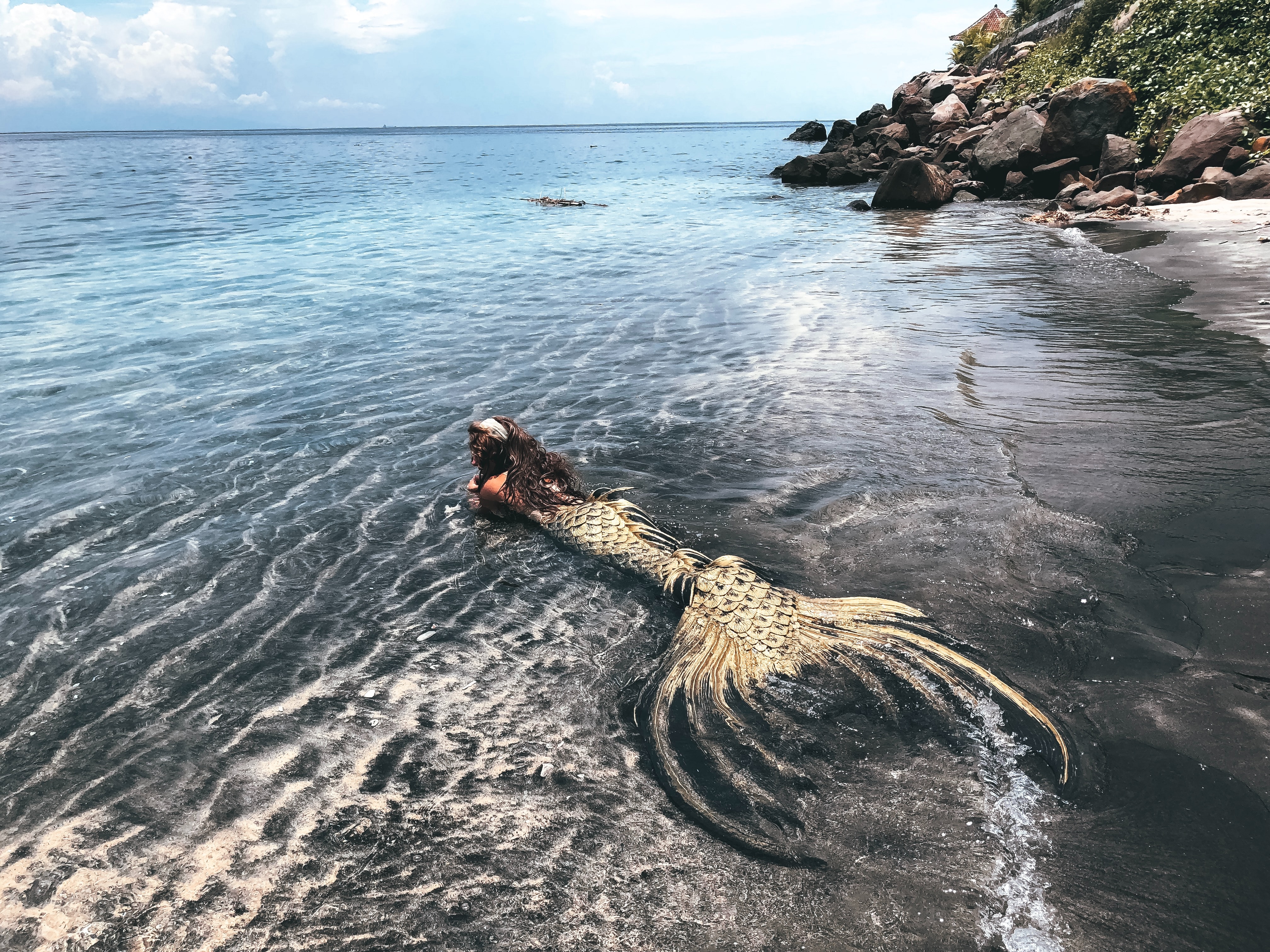Introduction: The Enigmatic Mermaids
Mermaids and mermen, half-human and half-fish beings, have long captured our imaginations and curiosity, leaving us pondering their existence. In this article, we will delve into the mesmerizing world of mermaids, exploring their rich history, cultural significance, and the enduring mystery of whether they could be real.
The Roots of Mermaid Legends
The concept of mermaids is deeply rooted in human culture, transcending time and borders. Ancient civilizations and modern societies alike have been captivated by tales of these enchanting creatures. From the alluring Disney character Ariel to the tragic mermaids of Hans Christian Andersen's tales, mermaids have left an indelible mark in literature, art, and popular culture.
Ancient Legends and Deities
The origins of the mermaid legend can be traced back to ancient times. In ancient Syrian mythology, Atargatis, the goddess of the sea, transformed into a mermaid after a tragic love story. Mesopotamian mythology introduces Enki, a merman god who saved humanity from a destructive flood. These myths showcase the enduring presence of mermaid archetypes in diverse ancient cultures.
Mermaids Around the World
Mermaid stories are not confined to a single culture. Japanese folklore features the Ningyo, a mystical fish-human creature offering eternal youth at a price. In Indonesia during World War II, Japanese soldiers reported encounters with "orang ikan" or fish people. In Africa, legends of Mami Wata depict water spirits with the power to bless or curse.
European Mermaid Myths
Ireland's marrows are known for their beauty and magical caps that allow them to live underwater. Explorer Richard Whitbourne reported a mermaid sighting off the coast of Newfoundland in the 17th century. Russian folklore presents the Rusalka, water nymphs with both benevolent and malevolent aspects. These European myths add to the allure of mermaids.
Modern Mermaid Encounters
Unconfirmed mermaid sightings have persisted into modern times. In 2013, Animal Planet aired a fictional documentary titled "Mermaids: The Body Found," reigniting interest in these mythical beings. Dive Master Jeff Lycho captured an elusive mermaid on film off the coast of Hawaii, sparking debates and investigations into the creature's authenticity.
Hoaxes and Misidentifications
Throughout history, hoaxes and misidentifications have contributed to the mermaid myth. The infamous Fiji mermaid created by P.T. Barnum in 1842 fooled many. Christopher Columbus and other explorers claimed mermaid encounters, which later experts attributed to manatees. These instances highlight the blurry line between fact and fiction.
The Scientific Perspective
From a scientific standpoint, the existence of mermaids is implausible. The vast physiological differences between humans and fish make it unlikely for such creatures to exist. Reproduction, digestive systems, and adaptations to cold oceanic waters pose further challenges to the idea of mermaids.
The Enduring Mystery
Despite the lack of scientific evidence, the allure of mermaids endures. The unexplored depths of our oceans offer hope that undiscovered creatures may still dwell below. Mermaids symbolize the allure of the unknown and the power of human imagination, reminding us of the magic and mysteries hidden beneath the ocean's surface.
Conclusion: Mermaids in Our Hearts
Whether real or mythical, mermaids will forever hold a special place in our hearts. They continue to inspire us to explore the uncharted waters of human imagination, reminding us of the beauty and wonder that lie beyond our understanding.
FAQs (Frequently Asked Questions)
Q. Are mermaids real?
A. Mermaids remain a subject of myth and legend, and there is no concrete scientific evidence to confirm their existence. While many cultures have stories and folklore about mermaids, their existence is widely regarded as fictional.
Q. What is the origin of the mermaid myth?
A. The mermaid myth has ancient roots, with tales dating back to various cultures and civilizations. Some of the earliest mermaid-like figures include Atargatis in Syrian mythology and Enki in Mesopotamian mythology. These legends evolved over time and have been shaped by different cultures, contributing to the diverse mermaid myths we know today.
Q. What are some famous mermaid stories in literature?
A. There are several famous mermaid stories in literature, including:
- "The Little Mermaid" by Hans Christian Andersen
- "Peter and Wendy" by J.M. Barrie (featuring the character of Wendy Darling)
- "The Mermaid" by H.C. Andersen
- "The Fisherman and His Soul" by Oscar Wilde
These stories have helped popularize and romanticize the mermaid myth.
Q. Have there been any recent mermaid sightings?
While there have been occasional reports of mermaid sightings, these encounters are often unconfirmed and controversial. In recent times, the 2013 Animal Planet documentary "Mermaids: The Body Found" generated interest and debate about the possibility of mermaid existence, but it was later revealed to be a fictional program. The authenticity of such sightings remains a subject of skepticism.
Q. How have hoaxes contributed to the mermaid legend?
A. Hoaxes and misidentifications have played a significant role in shaping the mermaid legend. One notorious example is the "Fiji mermaid" created by P.T. Barnum in 1842, which was a fabricated exhibit featuring the upper body of a monkey stitched to the tail of a fish. Such hoaxes blurred the line between fact and fiction and fueled public fascination with mermaids. Even renowned explorers like Christopher Columbus claimed to have encountered mermaids, only for these sightings to be later attributed to manatees or other sea creatures, contributing to the mermaid legend's mystique.










0 Comments